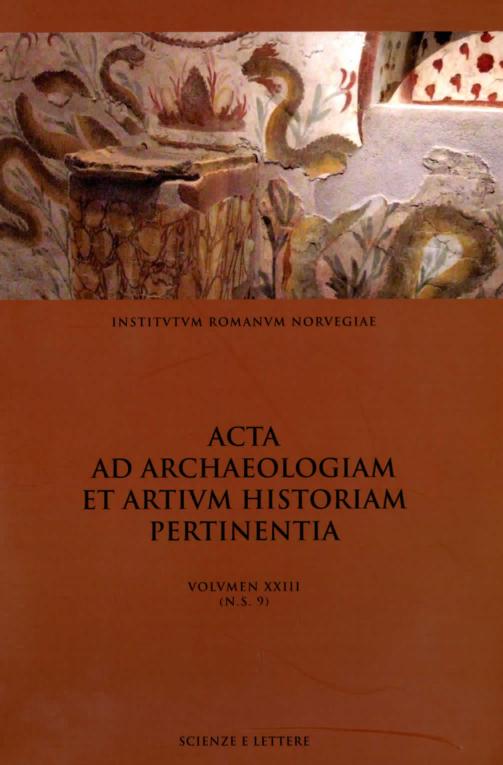Public service or private devotion? The diverse faces of monasticism in late antique and early medieval Rome
DOI:
https://doi.org/10.5617/acta.5773Abstract
From the fifth century on, religious foundations became the most prominent new additions to the Roman cityscape. Their effects on the rhythms of urban life will have been correspondingly profound, and indeed the transformative impact of churches, martyrial shrines and Christian cemeteries on topography and society alike is a well-rehearsed subject. Perhaps influenced by traditional ‘cloistered’ visions of monasticism, scholars have been slower to consider the role played by Rome’s exceptionally numerous monasteries in reshaping the urban collective. There is a reason to see many monasteries in late-antique and early-medieval Rome as bustling places imbued with a much more ‘public’ profile than is often imagined, whose members performed a range of important services – utilitarian as least as much as spiritual in nature-on behalf of their surrounding communities.How to Cite
Dey, H. W. (2017) “Public service or private devotion? The diverse faces of monasticism in late antique and early medieval Rome”, Acta ad archaeologiam et artium historiam pertinentia, 23(9 N.S.), pp. 209–228. doi: 10.5617/acta.5773.
Issue
Section
Articles
License

This work is licensed under a Creative Commons Attribution-NonCommercial 4.0 International License.
Authors who publish with this journal agree to the following terms:
- Authors retain copyright and grant the journal right of first publication with the work simultaneously licensed under a Creative Commons Attribution License that allows others to share the work with an acknowledgment of the work's authorship and initial publication in this journal.
- Authors are able to enter into separate, additional contractual arrangements for the non-exclusive distribution of the journal's published version of the work (e.g., post it to an institutional repository or publish it in a book), with an acknowledgement of its initial publication in this journal.
- Authors are permitted and encouraged to post their work online (e.g., in institutional repositories or on their website) prior to and during the submission process, as it can lead to productive exchanges, as well as earlier and greater citation of published work (See The Effect of Open Access).





